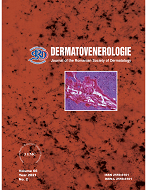Rezumat
Lupusul eritematos este o boală multisistemică, cu un spectru larg de manifestări, de la forme relativ benigne, limitate la piele, până la afectări grave, multiviscerale, cu prognostic rezervat.
Lupusul eritematos prezintă și astăzi un interes deosebit pentru clinicieni și imunologi, deși au trecut mai bine de 100 de ani de la prima descriere clară făcută de Biett sub denumirea de „erytheme centryfuge” (1823), denumirea de lupus eritematos fiind folosită pentru prima dată în 1838 de Cazenave.
În ultimul timp s-au elucidat o serie de probleme și s-au conturat concepte noi privind LE. Totuși, această boală atrage atenția cercetătorilor deoarece etiopatogenia nu este complet elucidată, evoluția este variabilă, cu exacerbări și remisiuni, iar tratamentul reprezintă încă o provocare, deși în ultimii ani descoperirea terapiei biologice, care acționează pe diferite etape ale imunopatogenezei bolilor autoimune, au schimbat tactica în aplicarea terapiei.
Tratamentul pacienților cu lupus eritematos are ca scop inducerea remisiunii bolii și menținerea acesteia pe o perioadă cât mai îndelungată, dar și prevenirea efectelor secundare ale terapiilor.
Prin acest articol doresc să subliniez, prin studiul literaturii recente de specialitate, importanța și complexitatea terapiei în lupusul eritematos.


